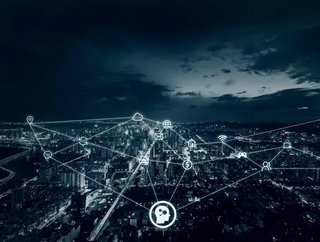Connected devices and data analytics lie at the heart of smart city projects

Smart cities are the future, there is no doubt about this. With numerous challenges both existing and emerging, exacerbated by growing populations and dwindling resources, it is essential for municipalities to more effectively control and manage many areas. These include water and electricity, traffic flow, parking, refuse removal and sewerage to name but a few. Connected devices, and the ability to analyse the data they provide - a concept now commonly known as the Internet of Things (IoT) - is essential to more effective and efficient management. IoT lies at the very heart of the smart city, and local governments need to look at deploying sensors and making use of those that already exist, in order to harness the data they require to take their cities into the future.
Key to the concept of the smart city is the ability to more efficiently manage assets and resources. This requires data from many thousands of data capture points – so called ‘connected devices’ – to instantaneously transmit information to a central server. The IoT forms the platform and network for this data collection and transfer, as well as the resultant analysis and intervention. These devices include water and electricity meters, environmental sensors, flow meters, level sensors, parking sensors, a variety of tracking devices, RFID readers and more. The potential applications for these are endless and can be used to revolutionise asset management, service delivery and resource allocation, among other areas.
For example, IoT sensors and data analysis can be put to highly effective use in managing traffic flows and traffic congestion. Utilising traffic sensors, parking sensors and other connected devices, valuable real-time data can be gathered on road usage and parking location statistics. This information can be fed back to authorities, which can assist with capacity planning, and to help citizens to make more informed decisions about their route and parking planning. If motorists are empowered to avoid congestion, they are able to save time that would otherwise be wasted sitting in traffic jams. This leads to more productive citizens, and the benefits of this will be felt as a knock on too many areas.
See also:
-
Singapore, London, New York top Global Smart City Performance Index
-
Cisco, Telenor Group to partner on digital transformation and smart city technologies
Smart metering solutions, which are already being applied to a certain extent, can also help municipalities and citizens to make the most of their resources. Smart meters can monitor usage, send statistics, provide analysis, and enable users to make more informed decisions about their usage of utilities such as water and electricity. They can also be used to switch supply on and off if this becomes necessary. Furthermore, IoT devices can be utilised in the area of services monitoring and maintenance. Sensors are able to transmit data about service failures and deficiencies directly to maintenance fleets, which are able to react with optimised routing and proactive services schedules, avoiding long delays and costly down time. Ultimately the power of the IoT for the smart city is the provision of information for analysis, which can then be used to drive more effective and informed decisions for planning and provision.
In addition to networks of connected sensors, it is essential for smart cities to leverage a Network Operations Centre (NOC), which is essentially the nerve centre of any IoT implementation. The NOC is the hub for gathering all relevant data from all of the connected end points and displaying such data in useful graphs indicating performance levels and failures. The NOC is also essential for analysing data to identify trends and make predictions, so that corrective action can be taken, or service personnel can be dispatched and monitored for effective failure investigation and resolution.
IoT can also be used to assist municipalities with asset tracking, monitoring and management, including real-time asset monitoring and management, workforce tracking and productivity analysis. This links into the smart city concept of effectiveness and efficiency, allowing for assets to be protected against fraud, misuse and theft, and for maintenance teams to be monitored and managed. IoT technology can, for example, provide advance notification on incidents of fraud, theft and misuse to limit the consequences or avoid such occurrences altogether. Assets are required to provide services, and through IoT, the city as well as its customers can now obtain an audit trail and monitor the delivery and effectiveness of services. IoT solutions can also measure and reconcile system data on all the Smart City services and therefore provide an undisputed and secure view on service related metrics. IoT provides up to date geo-location analysis as well as productivity monitoring. It allows for optimal routing and sizing of the workforce and provides proof of effectiveness. Smart cities require this to reduce costs and eliminate duplication and resource wastage as well as enforce compliance. The IoT allows for proactive rather than reactive maintenance, increasing service levels and avoiding costly down time. This in turn translates to lower rates and service fees.
The concept of the smart city can be applied in any country across the globe, and many European cities have made great strides in this regard. African cities have many unique challenges, including lack of infrastructure. However, while this can be seen as an issue, it is also an opportunity, as infrastructure can be deployed to support IoT, connected devices, and smart cities from the outset, ensuring that solutions can be developed with requirements in mind. Cities in Africa need to partner with suppliers and solutions providers that can identify, develop and implement the unique solutions required to meet the needs and challenges they face.
Eckart Zollner, Head of Group Business Development at Jasco Intelligent Technologies






